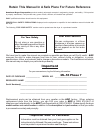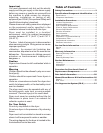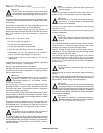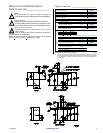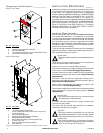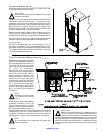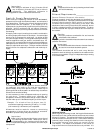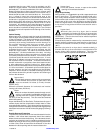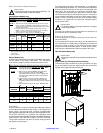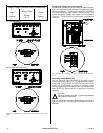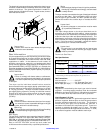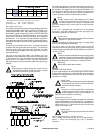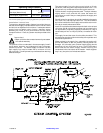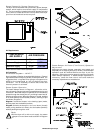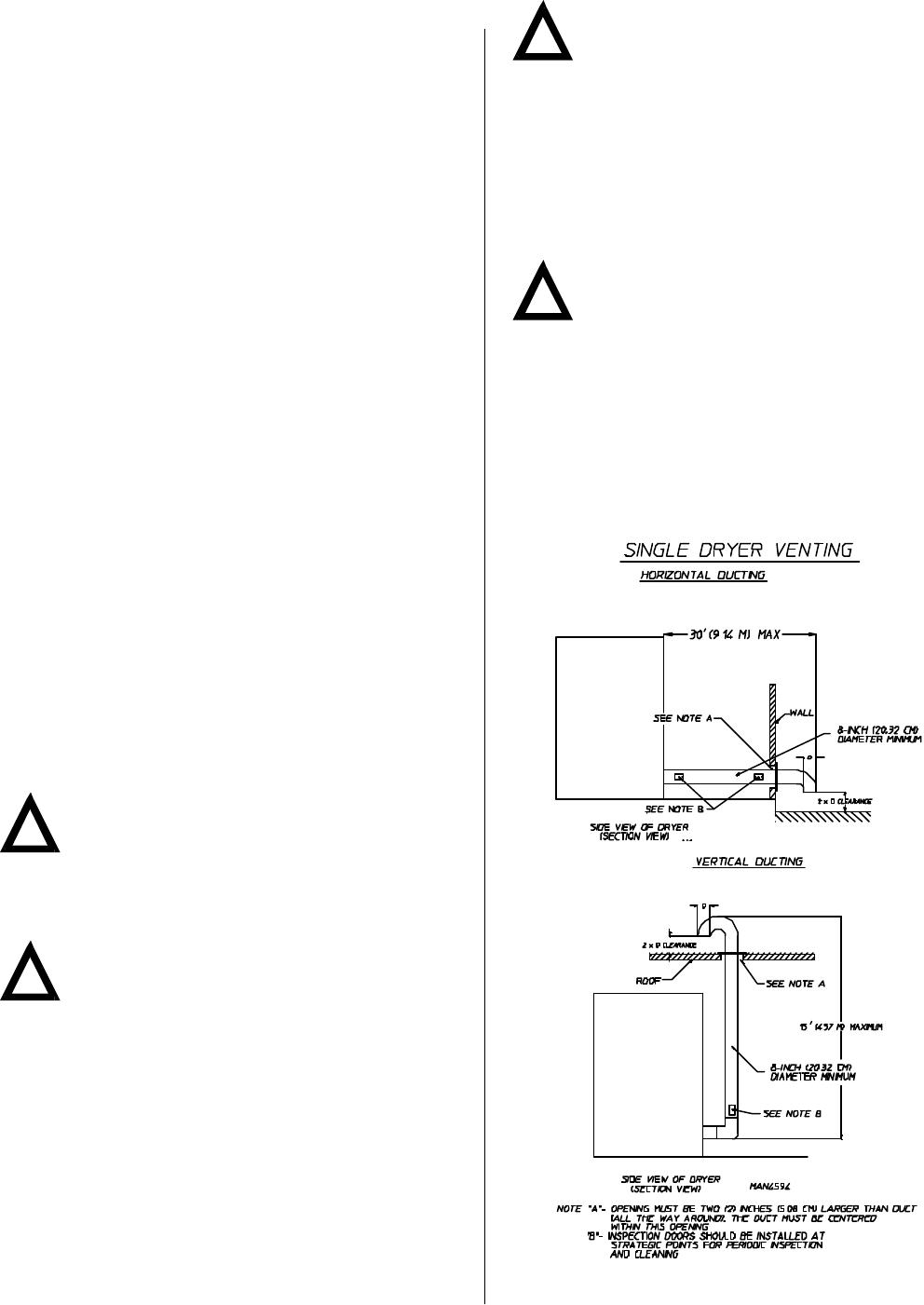
113345-9
www.amdry.com
7
!
!
!
!
Important
Do not use screens, louvers, or caps on the outside
opening of the exhaust ductwork.
Single Dryer Venting
When possible, it is suggested to provide a separate exhaust
duct for each dryer. The exhaust duct should be laid out in
such a way that the ductwork travels as directly as possible
to the outdoors with as few turns as possible. It is suggested
that the use of 90° turns in the ducting be avoided; use 30°
and/or 45° angles instead. The shape of the exhaust ductwork
is not critical as long as the minimum cross section area is
provided.
Important
Minimum duct size for a dryer that is vented
horizontally is 8-inches (20.32 cm) for a round duct
or an equivalent of 54 square inches (348.4 square
centimeters). The duct size must not be reduced anywhere
downstream of the dryer.
Exhaust back pressure measured by a manometer at each
basket (tumbler) exhaust duct area must be no less than 0
and must not exceed 0.3 inches (0.74 mb) of water column
(W.C.).
Minimum duct size for a dryer that is vented vertically is
8-inches (20.32 cm) for a round duct or an equivalent of 54
square inches (348.4 square centimeters). The duct size
must not be reduced anywhere downstream of the dryer.
suggested that the use of 90° turns be avoided; use 30°
and/or 45° angles instead. The radius of the elbows should
preferably be 1-1/2 times the diameter of the duct. Including
basket (tumbler)/dryer elbow connections or elbows used
for outside protection from the weather, no more than one (1)
elbow should be used in the exhaust duct run. If more than
one (1) elbow is used, the cross-sectional area of the
ductwork must be increased. All ductwork should be smooth
inside with no projections from sheet metal screws or other
obstructions, which will collect lint. When adding ducts, the
duct to be added should overlap the duct to which it is to be
connected. All ductwork joints must be taped to prevent
moisture and lint from escaping into the building. Inspection
doors should be installed at strategic points in the exhaust
ductwork for periodic inspection and cleaning of lint from the
ductwork.
Vertical Venting
When single dryer venting is used, the length of the ductwork
from the dryer to the outside exhaust outlet must not exceed
15 feet (4.6 meters). The minimum diameter of this ductwork
must be at least 8-inches (20.32 cm). In the case of multiple
(common) dryer venting, the distance from the last dryer to
the outside exhaust outlet must not exceed 15 feet
(4.6 meters). The shape of the ductwork is not critical as
long as the minimum cross-sectional area is provided. It is
suggested that the use of 90º turns be avoided; use 30º
and/or 45º angle instead. The radius of the elbows should
preferably be 1-1/2 times the diameter of the duct. Including
basket (tumbler)/dryer elbow connections or elbows used
for outside protection from the weather, no more than three
(3) elbows should be used in the exhaust duct run. If more
than three (3) elbows are used, the cross-sectional area of
the ductwork must be increased. All ductwork should be
smooth inside with no projections from sheet metal screws
or other obstructions, which will collect lint. When adding
ducts, the duct to be added should overlap the duct to which
it is to be connected. All ductwork joints must be taped to
prevent moisture and lint from escaping into the building.
Inspection doors should be installed at strategic points in
the exhaust ductwork for periodic inspection and cleaning of
lint from the ductwork.
Important
Exhaust back pressure measured by a manometer
in the exhaust duct must be no less than 0 and
must not exceed 0.3 inches (0.74 mb) of water
column (W.C.).
Minimum ductwork diameter for horizontal and vertical
venting is 8-inches (20.32 cm).
Note
When the exhaust ductwork passes through a wall,
ceiling, or roof made of combustible materials, the
opening must be 2-inches (5.08 cm) larger than
the duct (all the way around). The duct must be centered
within this opening.
As per the National Fuel Gas Code, “Exhaust ducts for type 2
clothes dryers shall be constructed of sheet metal or other
noncombustible material. Such ducts shall be equivalent in
strength and corrosion resistance to ducts made of galvanized
sheet steel not less than 0.0195-inches (26 gauge [0.05 mm])
thick.”
Outside Ductwork Protection
To protect the outside end of the horizontal ductwork from the
weather, a 90° elbow bent downward should be installed
where the exhaust exits the building. If the ductwork travels
vertically up through the roof, it should be protected from the
weather by using a 180° turn to point the opening downward.
In either case, allow at least twice the diameter of the duct
between the duct opening and the nearest obstruction.




